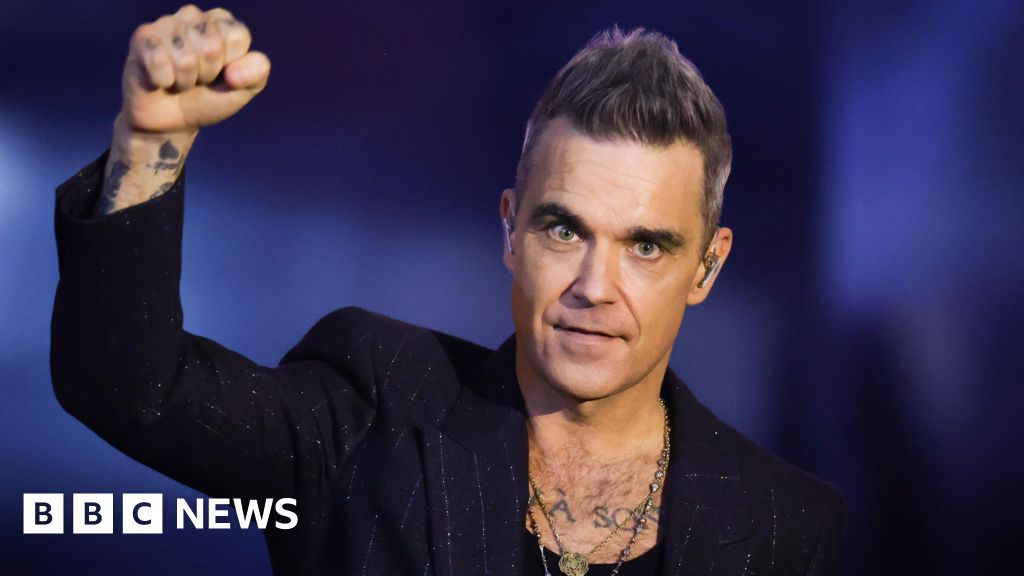YouTube Stars Transforming Television Landscape: A New Era of Entertainment

The world of entertainment is witnessing an unprecedented transformation as YouTube's top creators, including popular figures such as MrBeast, Jake Paul, and the Sidemen, are making significant inroads into mainstream television. This shift is evidenced by the recent launch of the second series of Inside, a reality show produced by the Sidemen that debuted on Netflix after a successful run on YouTube. The platform's confidence in the Sidemen's unique format has led to the commissioning of a US version, set to air later this year.
The Sidemen, consisting of prominent content creators, including rapper KSI and other YouTube personalities, sold out Wembley Stadium, which has a capacity of around 90,000 seats, for a charity football match against a team of YouTube Allstars. This remarkable event, which took place recently, not only showcased their immense popularity but also highlighted the growing influence of digital creators in traditional sports.
Among the notable attendees at the charity match was Jake Paul, whose historic boxing match against Mike Tyson in November was streamed more times than any other sporting event, setting a new record. Additionally, Jimmy MrBeast Donaldson, widely regarded as the most popular YouTuber, also participated in the game at Wembley.
MrBeast has recently made headlines by creating the worlds most expensive reality TV show, Beast Games, which reportedly ignited a bidding war, ultimately costing around $100 million (75 million) for its premiere. This show, inspired by the hit series Squid Game, has been a significant success, leading Amazon to achieve its largest-ever subscriber growth. With the immense popularity of the series, MrBeast is now planning to produce two more seasons, each with a staggering budget of $150 million.
During a recent event highlighting Netflixs upcoming programming, a member of the Sidemen humorously remarked that their partnership with the streaming giant was primarily driven by financial motivations. However, there is a deeper significance behind this collaboration. Jordan Schwarzenberger, the Sidemens manager, elaborated on the necessity of such partnerships, stating that creators are eager to elevate their work and require financial backing to realize their ambitious visions. He emphasized that self-funding has its limits and that collaborations with platforms like Netflix are essential for enhancing production quality.
In a testament to Netflix's success, the company announced quarterly revenue of $10.54 billion, exceeding expectations, and projected an increase to $11.04 billion for the following quarter, driven largely by membership growth and higher subscription prices. This financial success reflects a broader trend: the transition of YouTube creators into mainstream media outlets is steadily gaining momentum.
The evolution of the creator economy has shifted significantly since the early days of YouTube when skepticism surrounded the potential for creators to establish viable businesses. Today, MrBeast reportedly spends over $1 million to produce each video, which garners the attention of his 375 million subscribers, while the Sidemen operate with a production team of over 100 professionals.
Brandon Baum, a British YouTuber with over 15 million subscribers, noted that the quality of content produced has reached new heights, with teams often comprising individuals who have extensive experience in television. He highlighted that the skills acquired on YouTube are now applicable across various media platforms, indicating a notable shift in how traditional broadcasters view content creators.
As the lines between YouTube and conventional television continue to blur, broadcasters and streaming platforms recognize the importance of tapping into the vast, predominantly young audience that top creators command. This has become essential for boosting viewership and subscriptions.
Despite the high costs associated with productions like Beast Games, which reportedly netted a $100 million profit for Amazon, the expenditure is often considerably lower compared to the budgets allocated for feature films and premium television series featuring A-list actors and high-quality production.
Ben Woods, a creator economy analyst at MIDiA Research, explained that both creators and platforms have much to gain from these collaborations. Major creators have now become intellectual property in their own right, and their ability to engage audiences far transcends the platform they are on, as evidenced by the sell-out crowds for events featuring these influencers.
Furthermore, the popularity of YouTube as a streaming service has skyrocketed, with Nielsen reporting that it is now the most-streamed platform on smart TVs in the United States. YouTube's CEO, Neal Mohan, recently revealed that TV screens have overtaken mobile devices and desktop computers as the primary means of consuming content on the platform.
Since 2021, YouTube has paid over $70 billion to creators, artists, and media companies, contributing significantly to the growth of the creator economy. According to Forbes, MrBeast emerged as the most successful internet creator, earning an estimated $85 million last year, and has diversified his brand into various ventures, including merchandise and potential acquisitions.
Additionally, the Sidemen have ventured into multiple business opportunities, including a restaurant chain, a vodka brand, and a venture capital fund. The group's manager, Schwarzenberger, stated that the YouTube business serves as the driving force for all their other endeavors.
Looking ahead, MIDiA Research forecasts that by 2031, video creators worldwide will generate nearly $64 billion in revenue, a significant increase from the $30 billion market valuation three years ago. This trend is fueled by the allure of fame and success associated with platforms such as YouTube and TikTok, alongside advancements in technology that make content creation more accessible than ever.
However, Woods cautioned that while the creator economy is growing, only a select few will reach superstar status. The competition for audience attention is fierce, and as entertainment options multiply, creators must navigate the challenging landscape to build a sustainable career.
Despite the challenges, the transition of YouTube creators into traditional media signifies a promising future for the entertainment industry, as more creators begin to explore opportunities beyond the digital realm.



























